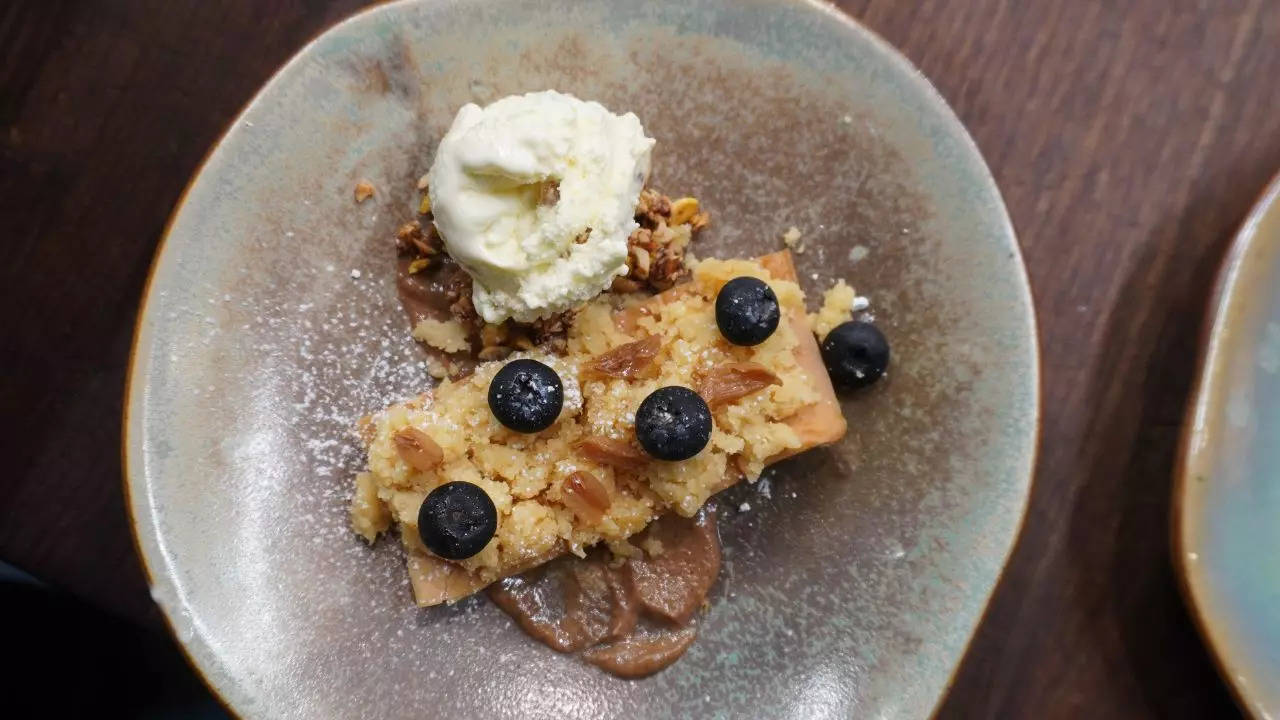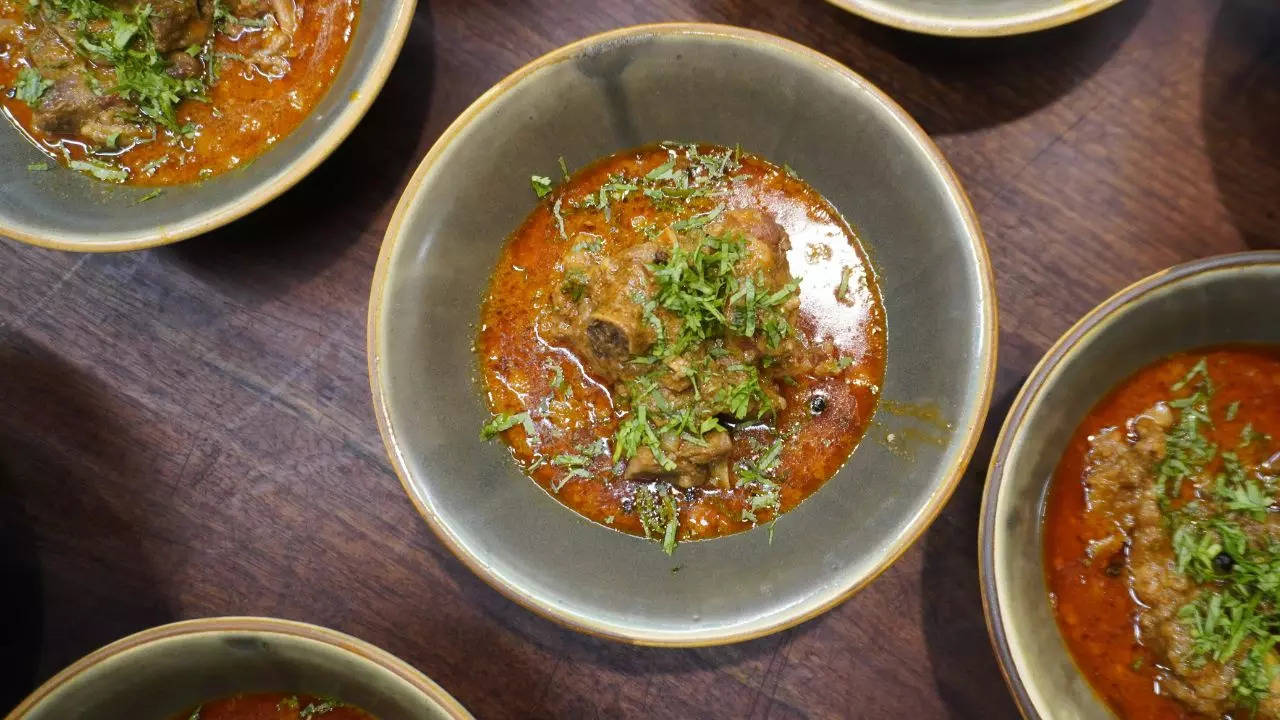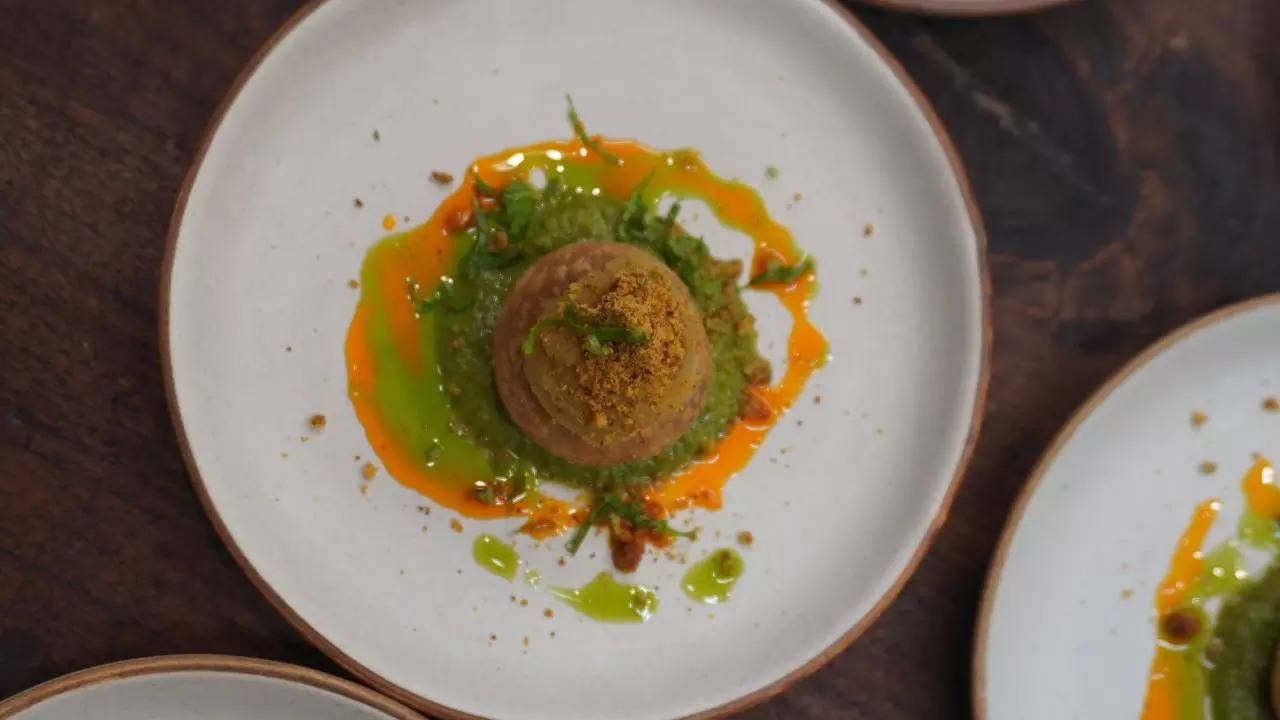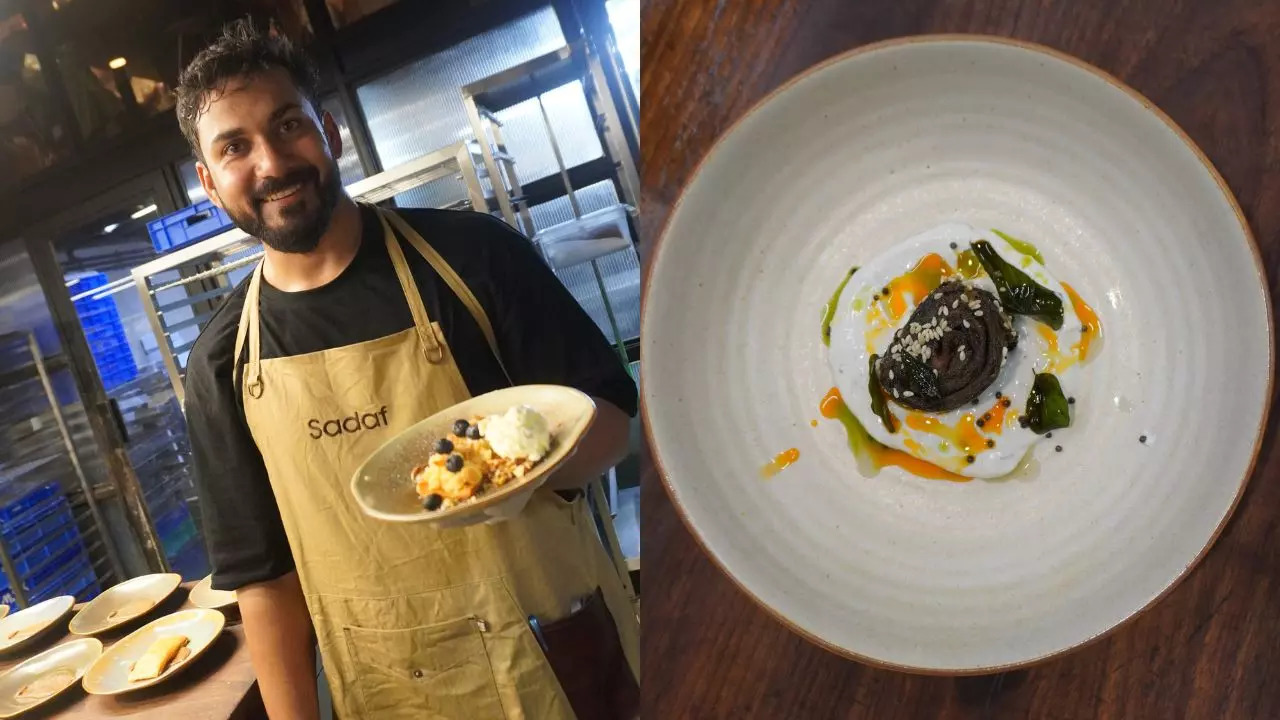Chef Sadaf Hussain shows the lesser-known side of Bihari cuisine
We often talk about representing India abroad, spreading our culture, flavour and history, but even within our own country there are many unexplored avenues that are yet to be discovered and celebrated in all their glory. Chef Sadaf Hussain –first known as a finalist of MasterChef India 2016 and now as a celebrated writer, chef and food enthusiast– showcasing the cuisines of Bihar is a subject he is passionate about.
In a recent collaboration with Street Kitchen Magazine In Mumbai and Bushmills, Chef Hussain brought his ‘Magadh Mayhem’ menu to life using seasonal ingredients from the tribal cuisines of Bihar and Jharkhand. Through this menu, he aimed to showcase the potential of Bihar food beyond Litti Chokha and open conversations about how regional cuisines can help us connect with other cultures and people through flavour.
Through food tours in Delhi, TED Talks, and his writing, Chef Hussain is passionate about shining a light on these lesser-known ingredients and cuisines and opening the door to how India’s indigenous food cultures have so much more to offer than the handful of dishes that have come to represent their regions.
Times Now caught up with Chef Hussain to know more about the idea and inspirations behind this unique experience.
What was the inspiration behind Magadh Mayhem?
I decided to use “Magadh Mayhem” because the name has a certain romanticism to it. Magadhe is not just a state like Bihar; it represents a region that historically covered parts of present-day Jharkhand and Bihar, as well as other areas. The Magadh empire was one of the largest in its time, with significant cultural and agricultural impact. The connection to this larger, more encompassing region felt more meaningful to the event.

What is the essence of? mocking kitchen?
In a way, in modern times, as well as if we go back a little further, like in the 19th or 18th century, we find a lot of agricultural space for people, in essence, right? They were mostly into agribusiness or farming. So, you also find a lot of zamindars and jagirdars who had huge properties to their name. Nowadays, they have probably moved away, but there are still a lot of zamindars there. And that is because of the agribusiness community or economy. The cuisine reflects this agrarian heritage. Unlike places like Lucknow, where you find more refined cooking techniques, Magadhe food is hearty and simple, often prepared with minimal ingredients but full of flavour. For example, in dishes like Litti Chokha, mustard oil brings a raw touch, characteristic of the region.
What makes a litti chokha a litti chokha is that if you look at the way it is prepared, it is a basic atta flour or whole wheat flour, right? And it has a sattu filling, which is chickpeas and khare masala. These are not fried. They are not even tadka. They are whole wheat masala mixed with them, not water, but mostly mustard oil. Because the mustard oil will give it that zing or the umami taste. Often when you cook with mustard oil, you are going to smoke it first and then add it to your soup. But here, that is not the case. In Magadh, you mix and mash the ingredients, like eggplant, tomato and boiled potatoes, for a dish like chokha. The seasonings are kept to a minimum, usually just mustard oil, chillies and onions. The simplicity reflects the everyday life of the people, especially the farmers who take these staple meals to the fields.
What spices and flavours are integral to Magadh cuisine?
If you think about studying people’s masala dabba, in different regions there will be different types of masala dabba. For example, if you go to the south, you will have different types of dal in your masala dabba, right? There may be urad, there may be chana, there may be some other type of lentils or some other dal. If you look at Delhi, for example, you will have salts and all that, so there is a lot of masala.
But if you look at the cuisine of Bihar or Magad, you won’t find all these things. What you will find is panch phoran, which is a Bengali cuisine. Let’s say it is an influence of Bengali itself. Or if you think of that entire belt as a whole, Magad and Bihar also have a lot of commonalities in their cuisine.
Key spices and ingredients that define Magadhe cuisine include kalonji (onion seeds), mustard seeds and cumin. These are staples in every household’s masala dabba in the region. Mustard oil is also crucial, often used raw to add that nutty, spicy flavour. When it comes to spiciness, green chillies are preferred over red ones, and different techniques are employed to control the intensity of the heat. These ingredients, regardless of community or religion, are central to the cuisine.
And the other thing that is used uniquely is chili peppers. There are different ways to use even the simplest green chili peppers: chopped, sliced, whatever. So, you can put the green chili in three ways. Number one, if you don’t want to add a lot of heat to it, then you’ll add the green chili like this.
If you want it a little spicier, make a cut in the center and then throw it in. If you want it extra spicy, cut it into cubes. And if you want it really spicy, cut it really thin to create different levels of spiciness.

How was the menu conceptualized?
My idea was to do modern and traditional cuisine at the same time. I am a person who likes to cook, but I also like to do fusion cuisine. But I hate doing fusion cuisine for the sake of it. You will find a lot of modern, new-age chefs who will also do… Oh, let’s do this that way, or, you know, think about that. And I’m like, no, but why? What is the purpose? Do you have a story to tell? What is the vision? In the modern times that we live in, I feel that every dish has to have a story. Because people now are not just looking to eat, they are now looking to experience. That was the vision that I want to give them, so that they understand that Bihar food It’s not just about Litti Chokha. And the second thing is that I will never make dishes that cost 30 or 40 dollars and charge them for 500 rupees. For that I just need my intellectual integrity. Because I think if you are going to serve a 50 rupee Pani Puri and charge 10 times more, people think you have to make it really fancy to justify the price. And that just ruins the dish itself.
It all started with an emotion. For example, I started with a snack called Sankranti, inspired by dahi chura. Chura is poha, and dahi, of course, is dahi. In Bihar, during Maka Sankranti, breakfast, is dahi chura. Sankranti is always the first festival in the country. I celebrated that tradition with soaked pohe, mixed with gud (mulberry sugar), and topped it with aerated dahi using a siphon gun. Then I topped it with shathoot (mulberries), because behind my house in Ranchi, I had a mulberry tree, so I wanted to pay homage to it. And for a crunchy touch, I added honeycomb.
One dish that I always make sure is on the menu wherever I cook is the Bihari Kebab. I consider the Bihari Kebab to be the best kebab in the world because it is so well spiced. It also has a unique cut called the pasanda cut. It was actually quite funny because even the butchers didn’t know how to cut it. So, we ordered the whole loin meat and then I was the one cutting and slicing the meat. They knew about the ceviche cut but not about the pasanda kat. So, together we taught them about this cut of ours. A couple of things that are quite unique about this kebab is of course the papaya to make it tender, to make it soft. Then you add poppy seeds to it, as a binder. You also add sattu to it as a binder. Then you also have poppy seeds and because papaya is soft, it also has a spicy kick to it.
One dessert that stands out is the Tazgi palate cleanser, which is inspired by aam panna, but in Bihar, Magadh, it is called aam chola. So, it was frozen, then we took it out, made it like a granita of sorts. Not completely frozen, but like soft, so you can bite into it. We made the aam chola without water, just mango pulp, with the masala, and then we mixed it a little bit, along with some bakaua, like a mango rice on top, and some chilli powder.
The main course of the Sultan, which consists of mutton Aahuna, called mutton Champaran and Bihari katal, then there was fish curry tarbhanga and then there was one more thing, bhaingan, kalonji bhaingan. So, four things in the main course, and all these things were put on the table, so that people could ladle them, as this is desi food and menat to share and enjoy, the way they want. There could be no sharam, the way you want to have it, just take it.
Then, there are two desserts which are kind of my favourite. One is called Thekua which is a biscuit from Bihar and is served as prasad. So, what I did was I used Thekua as a cheesecake base and put raspberry coulis on top of it. The second one was called Pidukiya which is similar to gujiya but unlike gujiya it is not soaked in chashni (sugar syrup). In this case, I made a French inspired mille-feuille, the filling was kept on top, some blueberries and some Mahua butter which I made from scratch.

Why is it important for you to showcase tribal ingredients?
I don’t think there is any book on tribal food in Bihar. We don’t know what tribals actually eat. My aim is to make you stop being arrogant and eat like people generally do, irrespective of religion, community, caste or whatever. There were three or four things that I got from Jharkhand. One was Futkal, which is a leaf from monsoon season which is sour and from which a chutney is made. The second is called Rugda, which is a collected mushroom, also from monsoon season. It tastes like gristle and when you break it and wash it you get something like squid ink, which you can use like squid ink to make pasta. And the third thing was red ant chutney, which has recently been given a GI tag in Odisha. But if you think of Demta chutney in the tribal belt, Jharkhand, Odisha, Chhattisgarh, because these ants come just before the monsoon. They smoke the tree and then, in a way, in quotation marks, they make them ‘behosh’ (faint) and collect them, make chutney and pickles out of them.
Why is it important for people to try these dishes?
I want people to take the experience home. They can have butter chicken or dosa.
You can eat vada pav, whatever you like. It’s totally up to you. But when you’re with me, I want food to be a conversation piece. So when you’re eating, you’re literally standing up. You’ll be able to understand other communities, understand other people’s food. The important part that I want you to understand is respect for other people’s food beyond what’s the most popular dish. Also, food is a male-dominated space. But when we talk about really delicious home-cooked food, it’s mostly women who make such amazing food. And here I am selling that food. And in a way, I’m saying that, you know, how women are reclaiming the streets or women are reclaiming spaces differently and how, maybe, they were in the past. That’s all. That’s me, my idea is always to use food as a kind of starting point, to make people live. Food for me is a museum of zinda. It’s like when you go to a museum, which is a dead museum, where you see old things. You just see them or hear other stories. But when it comes to food, you can live it. You can immerse yourself in that time.
Disclaimer:
The information contained in this post is for general information purposes only. We make no representations or warranties of any kind, express or implied, about the completeness, accuracy, reliability, suitability or availability with respect to the website or the information, products, services, or related graphics contained on the post for any purpose.
We respect the intellectual property rights of content creators. If you are the owner of any material featured on our website and have concerns about its use, please contact us. We are committed to addressing any copyright issues promptly and will remove any material within 2 days of receiving a request from the rightful owner.

